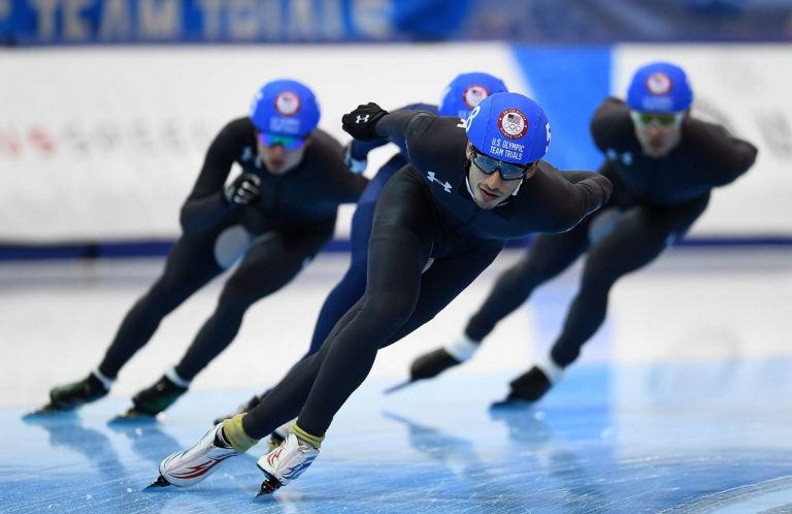Of course, athletic excellence is the primary focus of the Olympic Games, but technology has emerged as a pretty cool secondary story in both the Summer and Winter Games, and the 2018 Winter Olympics in South Korea is no different.
From virtual reality broadcasts to security drones to smart uniforms for some athletes to gloves that allow cashless payments to robots to 4K broadcast feeds and large-scale video walls at the NBC International Broadcast Center, technology will be featured prominently at every turn.
Intel will rotate roughly two dozen 180-degree cameras across 18 live Olympic events during the South Korea Games this month in what Intel calls “the largest-scale virtual reality event to date and the first live virtual reality broadcast of the Olympic Winter Games.
Intel will shoot 30 events to create a mix of VR live streams and video-on-demand content, along with another 12 events using 360-degree cameras.
[arve url=”https://www.youtube.com/embed/WutiTAJxhq4″ /]
Broadcasting and Protecting the Olympics
Leyard will provide multiple fine-pitch LED video walls from its 27-inch diagonal TWS series for NBC’s Olympics coverage on its broadcast sets in South Korea.
“It’s kind of a big deal for us to see the next generation of our LED panels be part of something like this,” says Leyard’s Steve Semarino.
The Leyard TWS Series is a family of ultra-fine pitch LED video wall displays with a convenient 27” diagonal, all-in-one design that fits a broad range of fine pitch broadcast environments including convex curved or traditional video wall in large or small spaces.
There are conflicting reports about whether viewers with pricey 4K TVs will get to watch their favorite Olympic events with that HDR depth. Among the events that could get 4K treatment on NBC’s airwaves for the 2018 Winter Olympics are the opening ceremony, figure skating, hockey, short track speed skating, ski jumping and snowboarding big air competitions.
1218 drones assemble into a snowboarder then morph into the Olympic rings. Amazing.#WinterOlympics#OpeningCeremony pic.twitter.com/6LUwVHxaBM
— Greg Hogben (@MyDaughtersArmy) February 9, 2018
Meanwhile, Intel has partnered with KT Corporation, a South Korean communications service provider, to deliver what company officials call “a series of immersive on-site 5G-powered experiences.”
RTS will provide broadcast intercom systems for NBC Olympics’ production of Games, extending a longstanding relationship with the network on its Olympics coverage. The RTS equipment list for NBC’s Olympics coverage in PyeongChang includes OMNEO, RVON, IP Trunking, ADAM intercom matrices and intercom panels.
“We are honored that RTS continues to be NBC’s trusted brand for broadcasting the world’s largest sporting events,” said Denis Castanet, director of global product management at RTS. “Our long-standing partnership with the NBC team continues to evolve with our latest innovations in intercom technology.”
Fans who are headed to South Korea can expect to see tight security for the Winter Games, as the Pyeongchang Olympics Anti-Terrorism and Safety Headquarters will use a number of high-tech solutions. The Olympic venues are located about 50 miles north of a demilitarized zone separating North and South Korea.
Security staffers will use drones to inspect activity on the ground with HD and thermal imaging cameras, and drones with radar networks will monitor the skies around the Olympic venues. All areas near the Olympic venues have been deemed as no-fly zones.
Wearing Olympics Technology
Perhaps one of the unique uses of technology at the Olympics this year is in perhaps the shortest supply. Two Dutch short track speed-skaters will be wear the Samsung SmartSuit during their competition. The suit is embedded with five sensors that can measure body posture and calculate how far a skater’s hips are from the ice, data that when analyzed can give athletes a sense of how they can increase their speeds, even by just a fraction of a second.
The data is sent to an app in real time to be analyzed by a coach, who can then send feedback to the athlete during the race in the form of vibrations. For example, a vibration on their wrist might advise them to correct their posture.
Under Armour tried something similar in 2014, but many athletes who struggled in those Games blamed defective technology from those uniforms for their poor performances, so the company rejiggered the SmartSuits for 2018.
Meanwhile, Visa is introducing payment-connected winter gloves and two other wearables that will enable cashless payments at the Games. The company will offer Olympics attendees smart gloves that contain a dual interface chip with an antenna that will enable contactless payments throughout the venue.
It will also offer four different commemorative Olympic lapel pins that enable payments and an array of thin, flexible adhesive microtags that are embedded with NFC chips and antennas and can be attached to a variety of items.
Robots provide customer service and housekeeping at the Olympics, including vacuuming in the press center, translation services and serving drinks. How long before we see robots competing for Olympic gold? Maybe by 2020?

